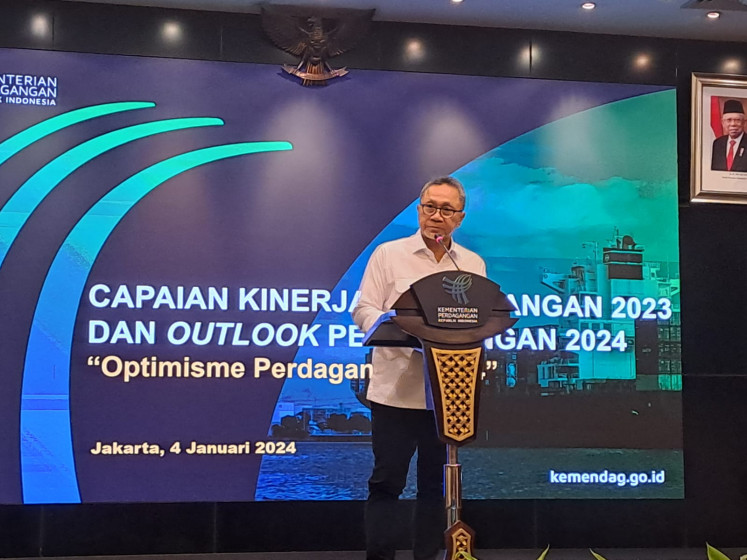Ecological changes blamed for deadly landslides
Collateral damage: A resident looks at a house that was among dozens damaged in a landslide in Pasirpanjang village, Brebes, Central Java, on Friday
Change Size

C
span class="inline inline-center">Collateral damage: A resident looks at a house that was among dozens damaged in a landslide in Pasirpanjang village, Brebes, Central Java, on Friday.(Antara/Oky Lukmansyah)
Large-scale deforestation across Indonesia has increased the risk of landslides, which have become one of the country’s most devastating natural disasters due to its high death toll.
Without greater efforts to prevent ecological changes, more deadly landslides will likely occur, such as the latest incident that killed seven people in Purbalingga regency, Central Java, on Thursday.
It was a big day for 8-year-old Saiful Umam from Jingkang village in Karangjambu subdistrict, Purbalingga. He had just been circumcised and his family had invited dozens of neighbors and relatives to dinner and to conduct a prayer for the young boy’s health.
The cold Thursday evening was filled with the sounds of peaceful prayers recited from the living room of Saiful’s house, when they were replaced by the rumblings of loose rocks and soil barreling down the slope of a nearby hill.
Saiful’s house was crushed in the landslide, killing Saiful and three of his friends, Abdul Rouf, 10, Al Taromi, 7, and Safangat Isnain, 4, who had been playing in Saiful’s bedroom. Six others were severely injured.
The incident took place only hours after another landslide hit Pasirpanjang village in Salem district, Brebes regency, Central Java, around 100 kilometers away from Jingkang. Seven people died, while 13 others were injured. Another 13 reportedly remain missing. The landslide also forced 245 residents of the village to leave their homes.
Brebes regent Idza Priyanti declared on Thursday a 14-day emergency alert status for landslides that will end on March 7.
“With the emergency alert status, we will focus our attention on handling this disaster,” Idza told reporters on Thursday.
A joint team of 550 personnel, comprising the Indonesian Military (TNI), the National Police and dozens of volunteers, have been deployed to search for people who are feared to be buried under 5 to 20 meters of mud in a 17-hectare area in Brebes.
“We are working to find missing victims. It’s quite difficult to find them because of weather and geographical challenges. Rain has fallen continuously for several days in this area,” said Brebes Disaster and Mitigation Agency (BNPD) head Eko Andalas.
According to National Disaster Mitigation Agency (BNPB) data, 3,753 landslides have occurred in Indonesia since 2010, killing 1,661 people. Central Java, West Java and East Java have experienced the highest number of landslides, with 1,334 taking place in Central Java, 961 West Java and 526 in East Java.
“Landslides are the deadliest natural disasters in Indonesia. Since January, 438 disasters have occurred, killing 60 people; 46 of them died in landslides,” BNPB spokesperson Sutopo Purwo Nugroho told reporters on Friday.
Around 17 percent of the country’s total population, or 40.9 million people, still live in landslide-prone areas in 274 cities and regencies.
Sutopo said the number of landslides and casualties had continued to increase as a result of years of deforestation and environmental degradation.
The rate of deforestation in Indonesia stands at 750,000 to 1 million ha per year, faster than the government’s ability to rehabilitate forests at 250,000 ha per year, he added.
“The conservation of natural resources must be prioritized. Many catchment areas have been turned into communities. People live on landslide-prone areas, so even low intensity rain could trigger a disaster,” Sutopo said.
Sutopo conceded that disaster mitigation was not a government priority as only 0.02 percent of regional budgets is allocated for tackling disasters. Ideally, each region allocates 1 percent of its budget to predisaster measures.
“The BNPB budget has also decreased from Rp 1.2 trillion [US$87.72 million] to only Rp 700 billion this year to cover all disasters in Indonesia. The disasters keep increasing, but our budget is decreasing,” he said.









